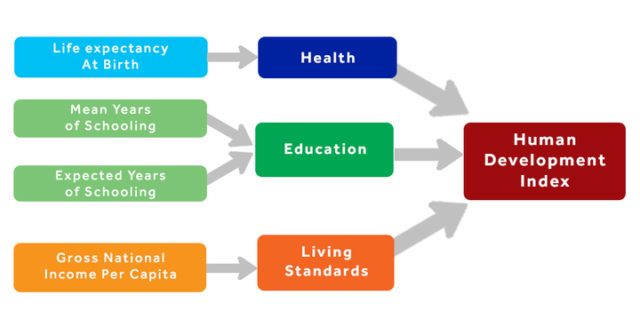According to the latest report from the United Nations Development Program (UNDP), Costa Rica leads the list of the Central American countries with the best human development.

The Costa Rican territory continues to lead in Central America (ranked 63), followed by Panama (66), El Salvador (121) and Nicaragua (124), Guatemala (127) only surpassed by Honduras (133). Guatemala fell by 2 points (from 125th to 127th) in the latest United Nations report on human development, which notes that “wide inequalities in people’s well-being eclipse continued progress” on that issue.
The Human Development Index (HDI) of the United Nations basically measures the living conditions of people (life expectancy), knowledge in general, and the level at which the inhabitants live; that is, in terms of health, income, and education. “A disaggregated analysis of the HDI indicators also shows an unequal distribution of achievements in education, life expectancy, and income within countries. The index adjusted by Inequality allows us to compare the levels of inequality within each country: the greater this inequality, the greater the decrease in the HDI of the country”, says the report.
On a global scale, Norway, Switzerland, Australia, Ireland, and Germany lead the ranking of 189 countries evaluated, while Niger, the Central African Republic, South Sudan, Chad, and Burundi occupy the lowest positions. Regarding Latin America, the Dominican Republic stands out as one of the countries that have significantly improved their human development.

In general terms, the global trend shows an improvement in the HDI. “Out of the 189 countries for which the HDI is calculated, 59 are currently in the human development group very high, and only 38 countries belong to the low HDI group. Only 8 years ago, in 2010, these figures they were 46 and 49 countries respectively”, the report says.
These are some of the most important data that the report shows on a global scale:
• Health has improved considerably, as reflected in life expectancy at birth, which has increased almost 7 years globally since 1990.
• The average levels of the HDI have increased considerably since 1990 – 22% globally and 51% in less developed countries.
• A child born today in Norway, the country at the head of the HDI, has a life expectancy of more than 82 years and will be in school for almost 18 years. While a child born in Niger, the country that holds the last place in the HDI, has a life expectancy of 60 years and will be enrolled for only 5 years.
• Countries with low and medium human development lose, respectively, 31 and 25% of their level of human development due to inequality
• Women’s participation rates in the labor market globally are lower than those of men, 49% versus 75% respectively.
• Latin America and the Caribbean have the 2nd highest birth rate, with 62 out of every 1,000 live births
• Latin America and the Caribbean have, on average, a high level of human development, only behind Europe and Central Asia. However, when adjusted for inequality, the HDI of the region is reduced by 21.8% due to the unequal distribution of advances, particularly income.
• The region has the smallest gap between men and women in the HDI with 2%, below the world average of 6%.
